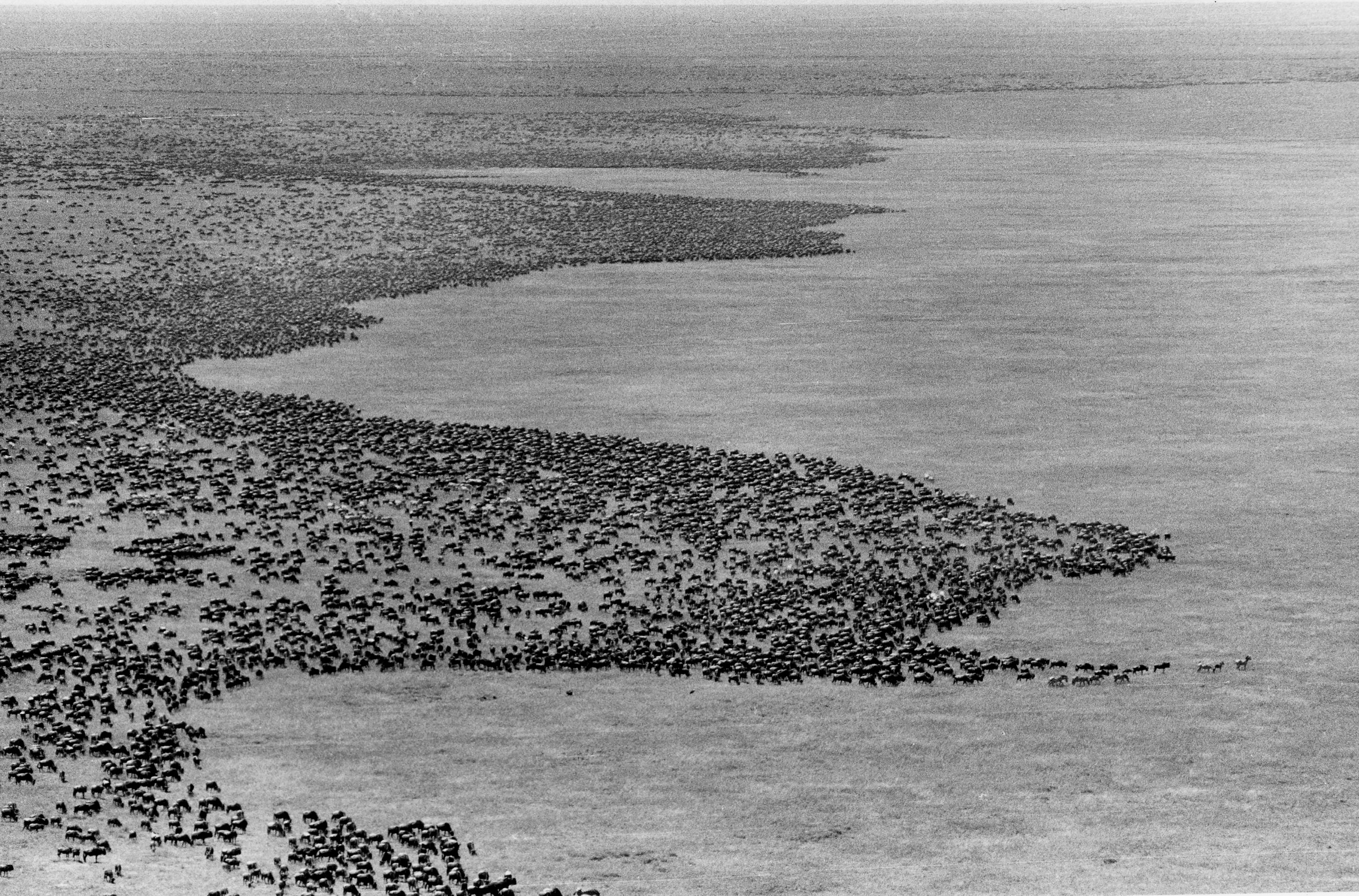Half of the wildebeests in the Serengeti are seemingly “missing” in the latest survey of the region. An AI-driven model has unexpectedly shown there are fewer than 600,000 wildebeests in this part of East Africa – less than half the previous estimate of 1.3 million.
This raises some big questions: has the wildebeest population collapsed? Have the animals moved? Is the AI wrong? Or has this new method simply revealed that the old estimations were way off the mark?
Every year, droves of wildebeests circle the Serengeti-Mara ecosystem in a clockwise migration, joined by zebras and antelopes as they avoid the hungry eyes of lions, crocodiles, and hyenas.
Over the past 50 years, researchers have monitored their movements and counted the populations using aircraft and aerial surveys. Some of the herds are photographed as the plane cruises over them in a straight line, then statistical models are used to extrapolate how many wildebeests are in unsurveyed regions.
Now, scientists at the University of Oxford have tried something new: satellites and artificial intelligence.
The team trained two powerful deep-learning models on more than 70,000 images of wildebeests, teaching them to recognize the animals. They then unleashed the system on high-resolution satellite photos of the Masai Mara National Reserve in Kenya and Tanzania, captured by Maxar’s WorldView-2 and WorldView-3 satellites between August 2022 and August 2023.
The AI models suggested there were around 324,202 to 337,926 wildebeests in 2022 and 502,917 to 533,137 in 2023. This is at least 700,000 less than previous estimates of 1.3 million, a figure that has remained largely unchanged since the 1970s.
The paper notes that this latest count “may even be considered an overestimate” since the AI can confuse wildebeests with zebras and other migrating animals.
So, where are all the wildebeests?
“The sheer difference between traditional estimates and our new results raises questions about where the ‘missing’ wildebeest might be. Based on data from GPS tracking surveys, we are confident that most of the herd were contained within the surveyed area,” Dr Isla Duporge, study author from the University of Oxford and Princeton University, said in a statement.
“And whilst some individuals may have been obscured by tree cover, it seems unlikely that such a large number – on the order of half a million – would have been concealed in this way,” explained Dr Duporge.

Wildebeest herds in the Serengeti.
Image credit: Tony Sinclair
However, the researchers believe that the lower counts do not necessarily mean that wildebeest populations have collapsed in recent years. Instead, it’s more likely they adjusted their migration routes.
It’s known that agricultural expansion, infrastructure development, and fencing are carving up the age-old routes of these plain-wandering animals. Meanwhile, climate change is altering the seasonal rainfall patterns, thereby changing the timing and routes of their annual migrations.
The researchers are keen to unravel this uncertainty because a satellite-based approach offers a far less invasive and much more efficient way to monitor wildlife across vast and remote landscapes, which could prove vital for conservation.
“The most basic fact to know as a foundation for conserving any species is how many of them there are. The technological breakthrough of our study – satellite-based wildlife monitoring, powered by AI – potentially revolutionises the answer for wildebeest, besides opening up incredible possibilities for monitoring other large species,” said Professor David Macdonald, study co-author and founder of the Wildlife Conservation Research Unit, Oxford University.
The study is published in the journal PNAS Nexus.
Source Link: Over Half Of Migrating Wildebeests Are Seemingly "Missing" In Latest Survey